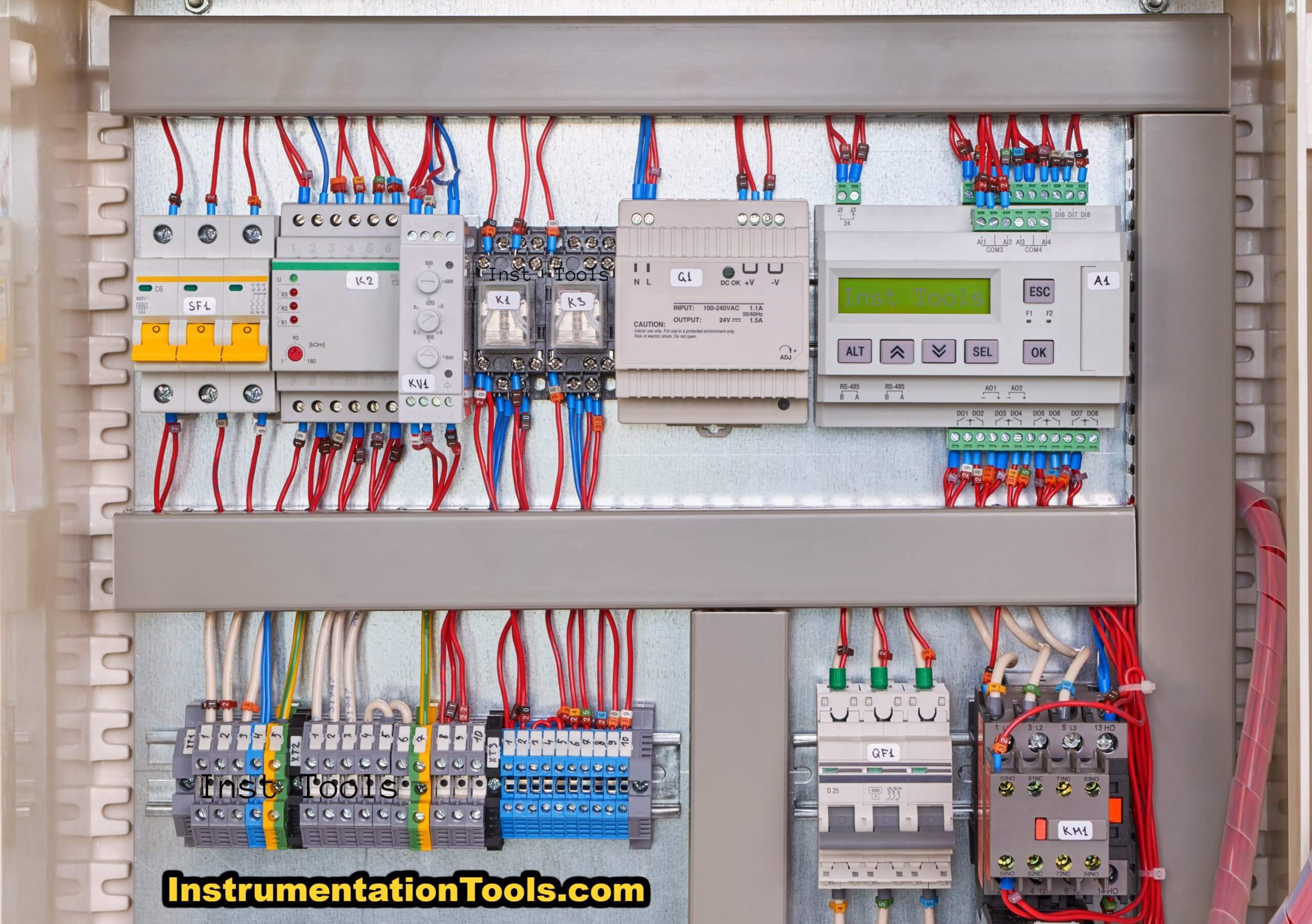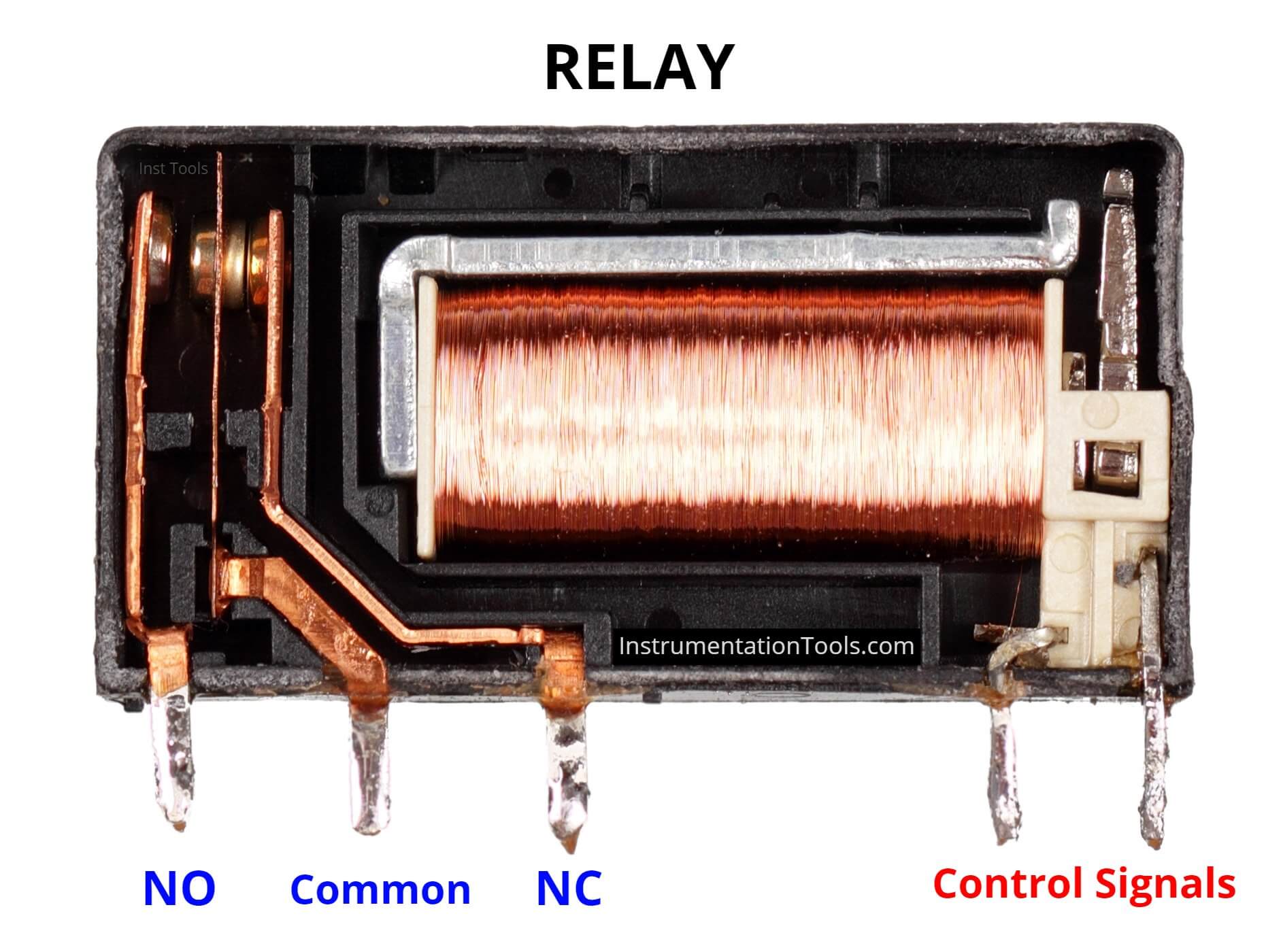In this post, we will understand the concept of a dry contact in PLC and understand its wiring.
In PLC electrical wiring, understanding the concept of contact switching and wiring is important for operation. A circuit is completed when the contact is closed; so, it is important to understand the wiring and switching.
When it comes to contact wiring, basically, two types of contacts are used –
- Dry contact and
- Wet contact
It is important to note that it applies only to digital inputs and outputs; because analog is variable in nature and there is no concept of contact in it.
What is a Dry Contact?
In this post, we will understand the concept of dry contact wiring.

Dry contact means a simple example of an electrical relay. The relay has a coil that when given power, operates a set of contacts at its outputs.
The contacts can be given a different potential than the potential applied at replay input. If the relay is energized by AC supply, then the contact potential to drive the load can be AC, DC, or even potential free.
This means the contacts and switching and powering the circuit irrespective of the power at its source. So, dry contact is defined as a contact in which power or voltage is not given to a circuit by a switch, but instead, given by an external power source.
In the example we discussed here, the circuit power is not supplied by the switch; it is supplied by an external power source that is applied at the contacts.
If it was to be supplied by the switch, then the relay potential which is given to energize the relay would have been directly applied to the contacts once triggered.

Let us simplify it more for better understanding. A relay has 5 basic terminals – A1 (supply positive), A2 (supply negative), COM (contact common), NO (contact normally open), and NC (contact normally close).
The terminals A1 and A2 are used to energize the relay. The contact circuit is isolated from the power circuit.
When the relay is energized, the potential given at the common terminal (AC, DC, or potential free) will be given to the NO terminal.
When the relay is de-energized, the potential given at the common terminal will be given to the NC terminal.
Advantages of Dry Contact
This shows that a dry contact acts just like an ordinary switch. They are used to provide isolation between two circuits.
One main advantage is that you can completely isolate the two circuits and check one circuit if any problem arises, without touching the second circuit. If any issue arises for example on the input side, then you do not need to check and switch off the potential supply of the output side.
In this way, we understood the basic concept and wiring of a dry contact in PLC.
If you liked this article, then please subscribe to our YouTube Channel for Electrical, Electronics, Instrumentation, PLC, and SCADA video tutorials.
You can also follow us on Facebook and Twitter to receive daily updates.
Read Next:
- PLC Wiring Diagrams
- Electrical Wiring Diagram
- 4-20 mA Transmitter Wiring
- Why 24 Volts DC Power Supply?
- Interposing Relay Panel Wiring